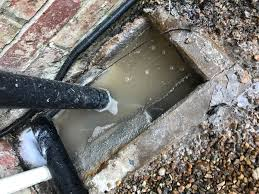The legal process that facilitates the transfer of ownership of a property between the seller and the buyer is called conveyancing. There are a variety of different steps and stages involved in the conveyancing process, and the time it will take for these steps to be completed can be impacted by a wide variety of different factors.
Conveyancing services like Sam Conveyancing are often asked how long the process will take to complete, particularly as both buyers and sellers are often eager to move on to the next stage of their lives in their new property. So whether you are working to a tight moving schedule or you simply want to know whether fast conveyancing is possible, here are some of the different factors that can influence the conveyancing timeline.
How long does conveyancing generally take?
Typically, the conveyancing process will be completed within 10 to 12 weeks. However, some processes will move much faster, while others will experience delays that will take longer to resolve.
As there are numerous moving parts involved with this part of the buying and selling process, there are a number of delays that can occur. Some of these delays include issues relating to securing a formal mortgage offer from a lender, issues revealed during the survey process and property search delays involving the local authority.
What exactly does a conveyancing solicitor do?
Conveyancers are responsible for a variety of tasks, including requesting payment from the purchaser’s lender, completing local authority searches, liaising with HM Revenue and Customs to ensure Stamp Duty is paid, liaising with the Land Registry to ensure ownership is officially transferred and preparing the completion statement ahead of the transfer of the deeds.
Can the conveyancing process be fast-tracked?
This is a difficult question to answer because a seamless conveyancing process relies on each step being completed in an efficient and timely manner. As one step naturally follows on from the previous step, any delays can very quickly impact the rest of the schedule.
However, don’t be disheartened because there are certain things that can be done to help keep the process moving as seamlessly as possible.
Firstly, it is imperative to keep in regular contact with your conveyancer, your estate agent and the other party involved in the transaction. This will ensure that any small issues are spotted and addressed as quickly as possible before they have the chance to become a bigger problem. Another thing to consider is to approach your lender and request a full home buyer’s survey rather than a valuation report, as this can save significant amounts of time and money.
Although this isn’t always possible, favouring a seller or a buyer who isn’t involved in a long chain can significantly speed up the process because it removes the possibility that problems will emerge within the chain that can immediately put the brakes on the plans of every party involved.
The conveyancing team you choose can also have a big impact on the amount of time the process takes to complete. It will be extremely beneficial to select a team that utilises technology to deliver an efficient service, as this will enable parties to sign documents digitally, which alone can reduce delays significantly. Interestingly, the Land Registry has recently suggested that the property purchasing process could be entirely digital by 2025, but this depends on how quick the sector is to adopt new technologies and processes.
Ultimately, good communication is essential to an efficient conveyancing process, so don’t be afraid to ask as many questions as required to ensure things keep moving along nicely.












+ There are no comments
Add yours